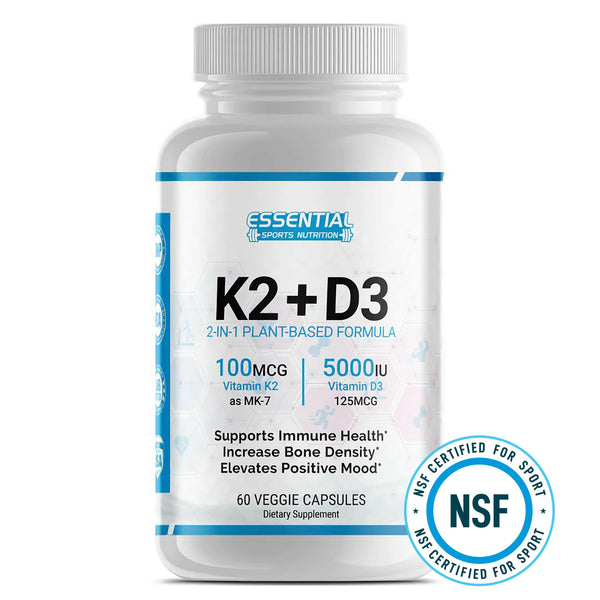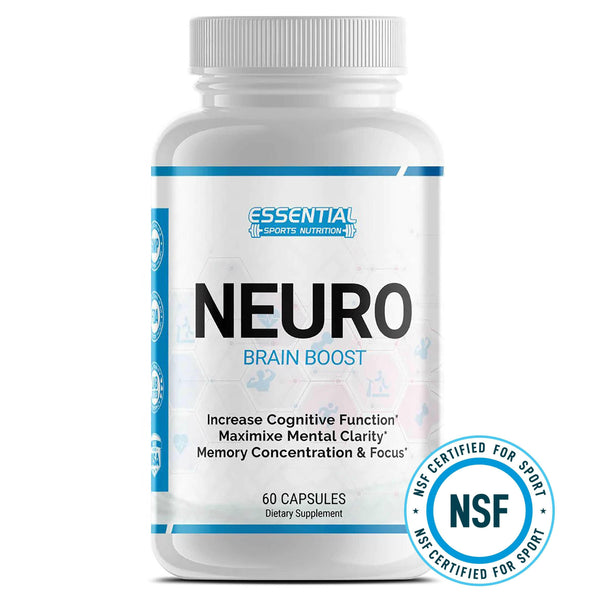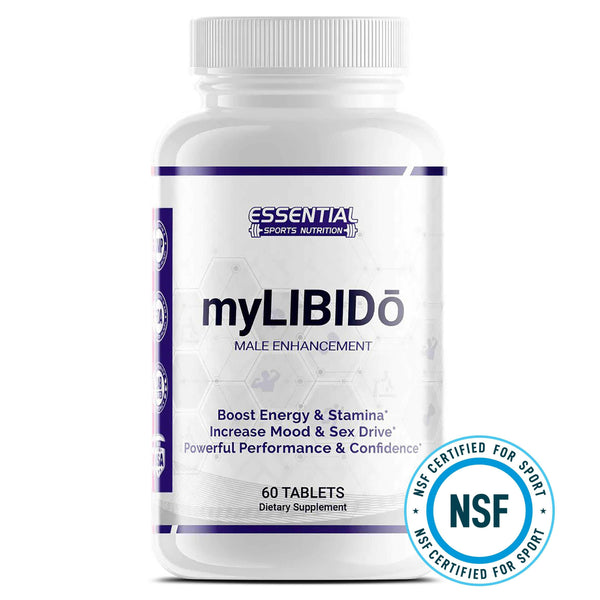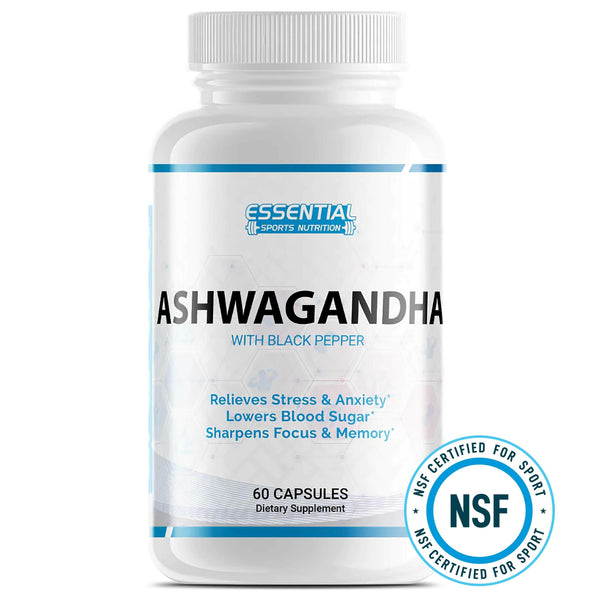Can Cardio Kill Your Gains?
Cardio confounds countless muscle-minded individuals, leaving you to wonder whether it's a friend or foe to your fitness goals. As you strive for peak physical performance, you might be torn between the treadmill and the squat rack, questioning if the miles you clock could counteract the gains you seek. While some champions of the weight room decry the mere mention of a marathon, evidence isn't entirely in their corner.
You're smart to suspect that the secret to sculpting a superior physique may not be so black and white. Stick with me as we sift through science and speculation to uncover if endurance endeavors are truly the thieves of thriving muscle mass or if they can coexist with colossal strength.
The Cardio and Muscle Myth
The belief that cardio negatively impacts muscle gains is not fully supported by scientific evidence, as research results vary on how cardiovascular exercise interacts with resistance training outcomes. While some studies suggest that combining cardio and weight training may inhibit muscle strength, power, and growth, this isn't a universal finding. The type of cardio performed matters. High-Intensity Interval Training (HIIT), for instance, seems to have a lesser or even no negative effect on muscle adaptations compared to extended cardio sessions.
You should consider that muscle protein breakdown, a concern linked with cardio, doesn't inevitably thwart muscle gains. A well-structured program that balances cardio and resistance training can be crucial for optimal muscle development. This synergy might prevent the potential negative effects of cardio on muscle, ensuring that you don't compromise your strength goals.
To navigate how cardio affects your muscle gains, healthcare professionals can offer personalized guidance. They'll consider your individual needs and goals to determine the right mix of cardio and weight training. Remember, the effects of cardio on muscle can be managed with careful planning, allowing you to enjoy the benefits of both endurance and strength improvements.
Understanding Muscle Growth

To fully grasp how cardiovascular exercise might influence your muscle gains, it's essential to understand the underlying mechanisms of muscle growth and adaptation. As you delve into this topic, remember that muscle hypertrophy—increasing the size of your muscles—happens when a specific set of biological processes are triggered. Here's what you need to know:
-
mTOR Pathway Activation: The mTOR pathway is a critical regulator of protein synthesis, the process by which cells construct proteins from amino acids. Strength training activates the mTOR pathway, leading to muscle growth.
-
Protein Synthesis: For muscle hypertrophy, your body must synthesize more proteins than it breaks down. Exercise physiologists emphasize the importance of net positive protein balance for gains.
-
Amino Acids: These are the building blocks of proteins. Consuming sufficient amino acids, particularly essential ones, is crucial for supporting the pathways for cell metabolism and growth associated with muscle gains.
-
Cell Metabolism and Growth: Both resistance training and cardio influence cell metabolism. The balance between them affects how your body adapts, potentially enhancing or impairing muscle growth.
Understanding these components can help you harmonize cardio with strength training to optimize your muscle gains without detrimental effects.
Cardio's Impact on Strength
While you might be integrating cardio to improve your overall fitness, it's important to consider how these activities could potentially diminish your strength gains. Cardio exercises, especially when performed excessively or too close to resistance training sessions, can affect muscle strength and size. This is partly due to the AMPK pathway, which is activated during endurance training and can inhibit the mTOR pathway critical for muscle hypertrophy.
| Exercise Type | Impact on Muscle | Consideration for Strength Training |
|---|---|---|
| HIIT | Minimal | Can be combined with resistance training |
| Steady-State | Moderate | May need separate sessions from weight training |
| Long-Duration | High | Could interfere with muscle recovery |
| Sprint | Low to Moderate | May be used to enhance anaerobic capacity |
Balancing weight training and cardio is essential. Cardiovascular health is crucial, yet it's pivotal to not let cardio overshadow the anaerobic exercise required for muscle strength. Anaerobic resistance training should remain a cornerstone for those aiming to increase muscle size and strength. Ideally, combine cardio and strength training strategically; for instance, consider HIIT, which has been shown to have less of a negative impact on resistance training adaptations, allowing for a more harmonious fitness regimen.
Balancing Weights and Cardio

Striking a balance between cardio and resistance training is key to maximizing muscle development and ensuring that your fitness goals are met. When you incorporate both cardio and strength training into your fitness routine, you're investing in your overall fitness and optimizing your body's performance. Here's how you can achieve the best results:
-
Prioritize Your Goals: Decide whether you want to focus on cardio or lifting. If building muscle is your priority, emphasize resistance training for different muscle groups and sprinkle in cardio workouts to support heart health and recovery.
-
Schedule Smartly: Alternate cardio and strength training days, or if you prefer, do cardio after lifting weights. This way, you won't exhaust the muscle groups you're targeting with resistance exercises.
-
Integrate Recovery: Ensure rest days are part of your routine. Overtraining can hinder progress, so giving your body time to recover is essential for muscle growth and preventing injuries.
-
Fuel Your Workouts: Proper nutrition is crucial. Cardio can help burn calories, but you need to replenish your energy stores with a balanced diet to support both cardio training and muscle recovery.
Nutritional Strategies for Recovery

Proper nutrition plays a pivotal role in your body's recovery process, with a balanced post-workout meal that includes carbohydrates and protein being essential to replenish glycogen stores and facilitate muscle repair. Eating enough calories and maintaining a calorie surplus can be critical in preventing muscle loss, especially when you're engaging in both cardio and strength training.
Hydration, often overlooked, is a key component of recovery. Sports Science and Sports Medicine emphasize the importance of fluids with electrolytes to maintain hydration levels post-exercise. Additionally, integrating antioxidant-rich foods into your diet helps reduce inflammation, thus enhancing muscle and strength recovery.
To further support your recovery, consider the following nutritional strategies:
| Nutrient | Sources | Benefits |
|---|---|---|
| Omega-3 Fatty Acids | Salmon, Walnuts | Reduces muscle soreness and inflammation |
| Antioxidants | Fruits, Vegetables | Minimizes oxidative stress and inflammation |
| Magnesium | Leafy Greens, Nuts, Seeds | Aids muscle relaxation and recovery |
Types of Cardio for Lifters

You've heard the debate: does cardio kill your gains? Let's examine the evidence starting with high-intensity interval training (HIIT), which studies have shown can enhance both your cardiovascular health and caloric expenditure efficiently. Moreover, the benefits of steady-state cardio, like improved endurance, should not be overlooked, as it can also play a key role in muscle recovery when scheduled appropriately around your weightlifting routine.
High-Intensity Interval Training (HIIT)
High-intensity interval Training (HIIT) offers lifters an effective way to integrate cardiovascular workouts into their regimen without undermining muscle growth. Here's why it stands out as a top choice:
-
Efficiency: HIIT maximizes calorie burn in a short period, which is ideal for your busy schedule.
-
Customization: You can adjust the intensity to match your fitness level and goals, balancing cardio exercise with strength training.
-
Muscle Preservation: Studies suggest HIIT causes minimal disruption to muscle mass, allowing you to build muscle and explosive strength concurrently.
-
Cardiovascular Boost: This form of aerobic exercise enhances heart health and endurance, vital for overall fitness.
Steady-State Cardio Benefits
While HIIT effectively blends cardiovascular workouts with strength training, steady-state cardio offers its own set of benefits for lifters looking to enhance endurance and calorie expenditure. Incorporating steady-state cardio exercises like jogging or cycling into your routine can significantly improve your cardiovascular fitness. This type of exercise promotes consistent blood flow and can be a reliable method for burning calories without the intensity of HIIT. Adding cardio alongside weight training doesn't just boost endurance; it also plays a role in muscle recovery and growth. By choosing the right cardio exercises based on your goals, you're able to create a well-rounded fitness regimen that balances strength and cardiovascular health without compromising your gains.
Timing Your Cardio Sessions

Optimally timing your cardio sessions about weight training is essential for maximizing muscle growth and ensuring effective recovery. Here's how you can schedule your workouts for the best results:
-
Pre-Workout Cardio: A light aerobic warm-up before lifting weights can make it easier for your muscles to switch into hypertrophy mode. This approach is particularly beneficial for beginners or those with lower muscle mass.
-
Post-Weight Training Cardio: If you're more advanced in strength training, you might find that cardio after lifting weights can enhance muscle gains by promoting additional calorie burn without impeding recovery.
-
Separate Sessions: To avoid fatigue, consider separating intense cardio and strength training sessions by at least a few hours. This allows sufficient recovery and ensures you're able to give your best to both types of workouts.
-
Listen to Your Body: The timing of your cardio sessions should be based on your personal goals and how your body responds. Some individuals may experience better results with cardio before weight training, while others might thrive with a different schedule.
Long-Term Effects on Hypertrophy
Exploring the long-term effects of concurrent training reveals a complex relationship between cardio and muscle hypertrophy, with studies indicating varying impacts on strength and size gains. Research shows that when it comes to building muscle, the type and amount of cardio you incorporate into your training regime can play a critical role.
| Impact Factor | Concurrent Training Effect |
|---|---|
| Strength & Power | This may decrease with excessive cardio |
| Muscle Hypertrophy | Mixed evidence; can be maintained |
| Type of Cardio | HIIT may have minimal impact |
| Resistance Training Priority | Essential for muscle gains |
| Balance | The key for long-term development |
While some evidence suggests that long-term concurrent training might lead to decreases in strength and power, it doesn't always translate to a reduction in muscle size. Certain types of cardio, like high-intensity interval training (HIIT), may improve your Strength and Endurance without significant interference with weight-lifting gains.
It's crucial to find a balance that prioritizes resistance training if your goal is hypertrophy. Excessive cardio could potentially undermine your strength, but a well-structured training plan that includes both modalities can support long-term muscle growth. Remember, it's about finding the right mix that works for your body and your goals.
Cardio and Weight Training FAQs:
Q: Can doing too much cardio kill your gains?
A: Doing excessive cardio can potentially interfere with muscle growth and strength gains, especially if it is not balanced with proper weight training and recovery. It is important to find the right balance between cardio and weight training to optimize muscle growth.
Q: How much cardio should I do if I want to build muscle?
A: The amount of cardio you should do when aiming to build muscle depends on your individual goals and preferences. Generally, incorporating moderate amounts of cardio alongside weight training can support overall cardiovascular health without negatively impacting muscle gains.
Q: Does cardio burn muscle?
A: Cardio does not directly burn muscle in the same way it burns fat. However, excessive cardiovascular exercise, especially when done in the absence of weight training and adequate nutrition, can potentially lead to muscle breakdown and reduced muscle mass.
Q: How does cardio immediately affect the ability to build muscle?
A: Engaging in cardio immediately before weight training may impact the quality of your weight training session and reduce your ability to lift heavy and stimulate muscle growth. It is advisable to separate cardio and weight training sessions to optimize muscle-building potential.
Q: Will cardio make me lose muscle?
A: When performed in moderation and in conjunction with appropriate resistance training and nutrition, cardiovascular exercise won’t necessarily cause muscle loss. It can support overall fitness and performance, contributing positively to muscle preservation and development.
Q: Can doing cardio interfere with muscle growth?
A: Engaging in excessive cardio or performing it at the wrong times about weight training can potentially interfere with the stimuli needed for muscle growth. It’s important to balance and time your cardio sessions to support, rather than hinder, muscle strength and size development.
Q: How does cardio alongside weight training affect muscle gains over time?
A: Incorporating cardio alongside weight training can provide a holistic approach to fitness and potentially support long-term muscle gains. Balancing both types of exercise allows for improved cardiovascular health, muscle endurance, and overall physical performance.
Q: What is the best type of cardio to combine with weight training?
A: The best type of cardio to combine with weight training is typically low-impact, steady-state cardio such as walking, cycling, or swimming. These forms of cardio can complement weight training without excessively taxing the muscles or interfering with muscle recovery and growth.
Q: Can performing cardio and weights without compromising gains?
A: When done in moderation and appropriately balanced, the combination of cardio and weight training can be beneficial for overall fitness and muscle gains. Strategic incorporation of both forms of exercise can support cardiovascular health, muscular endurance, and physical performance.
Q: How does excessive cardio hurt your gains?
A: Excessive cardio can hurt muscle gains by potentially leading to increased muscle breakdown, decreased muscle strength, and suboptimal muscle recovery. Finding the right balance and timing for cardio alongside weight training is crucial to prevent any negative impact on muscle gains.
Other Frequently Asked Questions:
Does Cardio Ruin Muscle Gains?
You're probably wondering if cardio ruins muscle gains. Research shows it's not that simple. When you balance cardio with lifting, you won't necessarily lose strength or size. The right kind of cardio, like HIIT, may even complement your muscle-building efforts. It's about finding the right mix and timing for your workouts. Always consider your personal goals and consult with a professional to tailor the best approach for you.
Should I Do Cardio if I Want to Gain Muscle?
You're walking a tightrope, balancing muscle gains with the health benefits of cardio. It's not a simple yes or no. You can do cardio while aiming for muscle growth, but it's about striking the right balance. Prioritize your resistance training, keep your cardio sessions moderate, and allow for ample recovery. This approach ensures you're fueling your muscles' growth without overtaxing them, navigating the path to both strength and endurance.
How to Do Cardio Without Losing Muscle?
To maintain muscle while doing cardio, you'll need a strategic approach. Incorporate low-intensity steady-state (LISS) or high-intensity interval training (HIIT) on separate days from strength training. Fuel your body adequately with protein and carbs, and don't skimp on rest days for recovery. Tailoring the duration and intensity of cardio sessions to your fitness goals is key. Always listen to your body to prevent overtraining and muscle loss.
Does Cardio Ruin Bulking?
You're concerned if cardio hampers your bulking efforts. It's not that straightforward. While excessive cardio can impact muscle growth, it's about balance. Moderate cardio supports heart health and can aid in recovery without significantly detracting from your gains. It's crucial to tailor your workouts to your goals. Prioritize weight training for hypertrophy and incorporate cardio strategically, ensuring it doesn't overshadow your muscle-building workouts.
Combine Cardio and Strength Training
In conclusion, you don't have to ditch the treadmill to keep your gains. Balance is key. For instance, a study of elite powerlifters incorporated moderate cardio without sacrificing strength. By strategically timing cardio, managing intensity, and fueling adequately, you can preserve—and even enhance—muscle hypertrophy. Remember, cardio isn't the enemy of muscle growth; it's part of a holistic approach to fitness, complementing your lifting routine and contributing to your overall health.




























